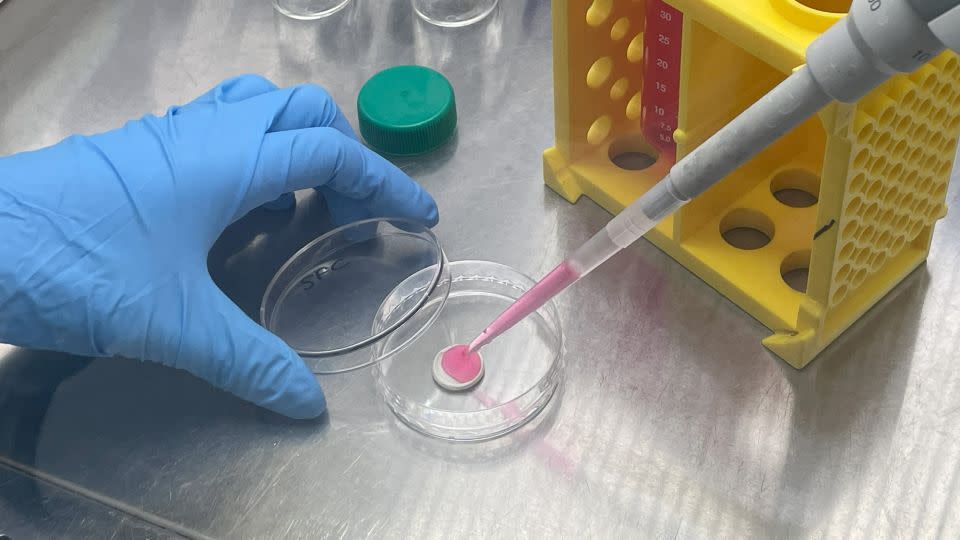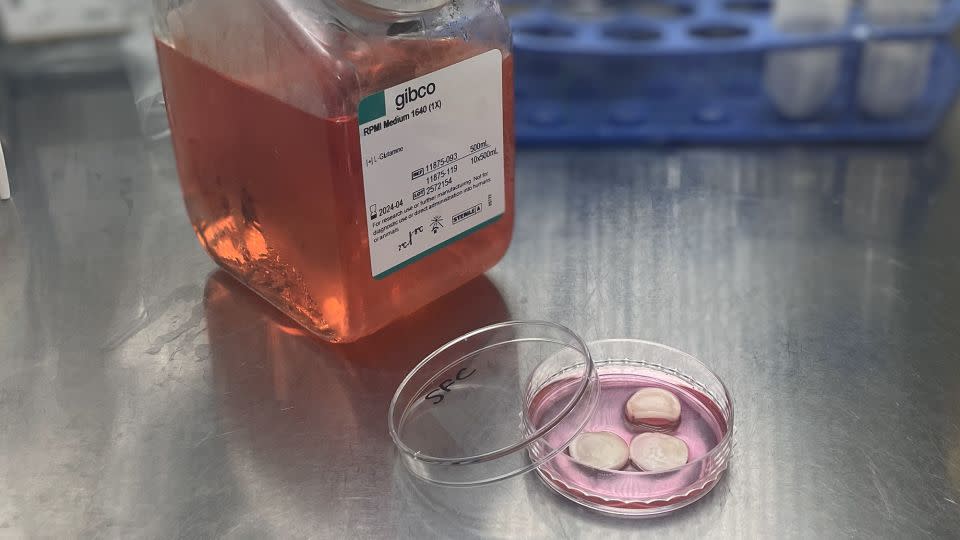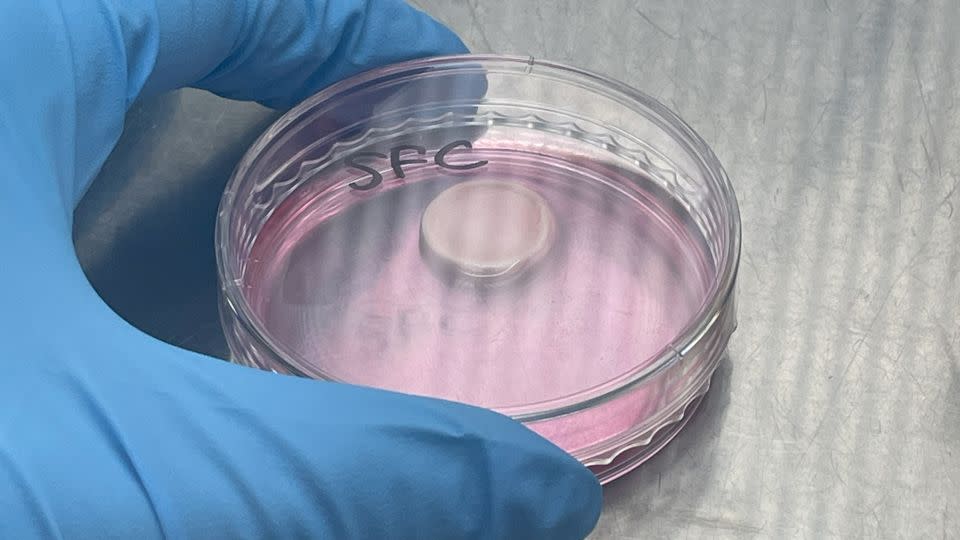Do you want your burger medium rare, well done, or lab-grown?
Researchers in South Korea say they have developed a new way to make lab-grown meat taste just like the real thing. It may look like a translucent, bubblegum-colored pink disk, but scientists hope it could revolutionize the meat on people’s plates.
Lab-grown meat – also known as cultured meat or cell-based meat – is emerging as an alternative to conventional meat, offering the same nutritional benefits and sensory experience without the carbon footprint
It is made by growing animal cells directly in a lab on 3D structures called scaffolds, which allows the cells to multiply, eliminating the need to breed and keep animals.
Scientists have created everything from cultured meatballs to 3D-printed steaks. While some previous versions of cultured beef mimicked the look and feel of real beef, they may have been missing one key element, according to a new study: taste.

But in the study, published Tuesday in the journal Nature Communications, researchers say they have cracked the code and developed a cultured meat that “generates the flavor of grilled beef when cooked.”
“Taste is the most important thing for cultured meat to be accepted as real,” Milae Lee, co-author of the paper and a doctoral candidate at Yonsei University’s Department of Chemical and Biomolecular Engineering in Seoul, told CNN.
To mimic the taste of regular meat, Lee and her colleagues created the flavors that develop during the Maillard reaction. This chemical reaction occurs between an amino acid and a reducing sugar when heat is applied, giving the burger that delicious, burnt flavor.
They do this by introducing a switchable flavor component into a gelatin-based hydrogel, creating something called a functional framework, which Lee described as the “basic composition of the cultured meat.”


The flavor component, which consists of a flavor group and two bonding groups, remains in the scaffold until it is heated. It “turns on” when cooked for five minutes at 150 degrees Celsius (302 degrees Fahrenheit), releasing meaty flavors in a replication of the Maillard reaction, Lee said.
Because the cultured meat isn’t yet edible, the researchers used an electronic nose, which “mimics the human nasal system,” Lee said, to test the aromas of the cultured meat and see how they compare to conventional meat.
For this study, the researchers focused on adding “meaty” and “savory” flavors, Lee said, but the flavoring could also be adjusted to incorporate other flavors — such as the fattiness that comes from a juicy rib-eye, for example.
The research focused on the science behind the taste of lab-grown meat, rather than commercializing the process, which is why the scientists used substances that aren’t suitable for human consumption. But they believe the strategy can be applied to conventional edibles, Lee said.
They also plan to reduce the amount of animal products used in the process, including the gelatin-based hydrogel, with the ultimate goal of growing meat that is virtually free of animal substances.


According to UN data, livestock farming is responsible for 6.2 billion tons of carbon dioxide released into the atmosphere each year. That is about 12% of all man-made emissions. Beef production is the most carbon-intensive.
Cultured meat is seen as a climate-friendly alternative to beef. However, some studies suggest that the potential environmental impact may be overstated and depends on finding production methods that require less energy.
“Lab-grown meat has enormous potential to contribute to sustainable diets, but taste is likely only a small part of its success,” said Jennifer Jacquet, a professor of environmental sciences at the University of Miami, who was not involved in the study.
“Whether and how quickly cultured meat becomes acceptable or widespread depends largely on the actions of powerful meat and dairy companies,” she told CNN.


There has already been opposition in the U.S. In May, Florida Governor Ron DeSantis banned the sale of lab-grown meat in the state, in what he called an effort to protect farmers and ranchers.
“Today, Florida is fighting back against the global elite’s plan to force the world to eat petri dish-grown meat or insects to achieve their authoritarian goals,” DeSantis said in a statement at the time.
Elsewhere in the US, it is possible to get lab-grown chicken, but not yet beef.
In 2023, the U.S. Department of Agriculture gave the green light to two companies — Good Meat and Upside Foods — to begin selling their cultured chicken products, becoming the second jurisdiction after Singapore where consumers could purchase them.
Last year, the companies introduced their chicken for the first time in upscale restaurants in the US.
In May, Huber’s Butchery in Singapore became the first store to sell cultured meat, a Good Meat shredded chicken made with just 3% cultured meat. The rest is plant-based ingredients, according to Good Meat’s website.
Now that the research team in South Korea has found a piece of the puzzle to improve the taste of lab-grown meat, the next challenge is to combine that taste with cultured meat that better mimics the look and texture of the real thing. The pink, gelatinous blob is unlikely to make it onto the menu.
For more CNN news and newsletters, create an account at CNN.com